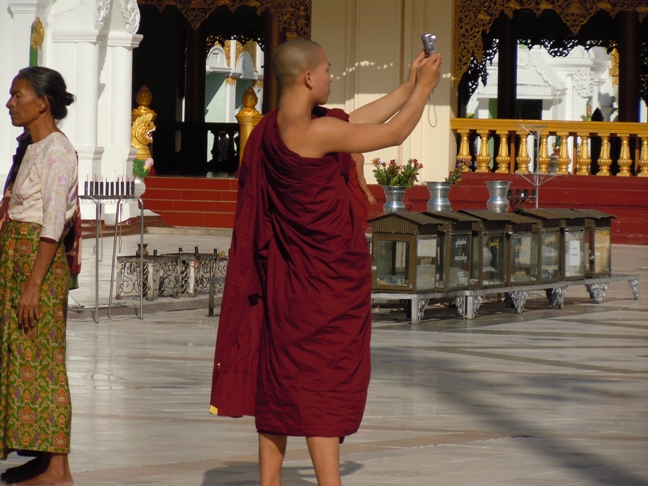One of the most striking changes in Burmese society in the past decade or so is the rapid expansion of access to photography. I remember a time when a camera was still a novelty in many parts of Burma, and when a digital camera (I took my first one to Burma in 2004) was a crowd-puller. A request along the lines of “dat poun yait mae?” would almost always be greeted with “yes, but please let me see the picture once you’re done”.
These days, cameras, of all sorts, are ubiquitous. Sometimes I wonder whether this changes anything at a more fundamental level. Do we end up knowing more, or seeing more, because photography is so readily accessible? What are the impacts of cheap and widely available camera technology on Burmese society itself? Does it make the kind of violence the country saw in 1988, or even 2007, less likely? More specifically, what will easy-to-use and widely available cameras mean for the documentation of the new wars in Burma’s borderlands? What sorts of photographic archives are currently being made?
As with this week’s earlier post about Burma’s reading culture, any thoughts and ideas from New Mandala readers are very welcome. On the topic of reading in Burma there were some fascinating observations, and I expect the topic of photography could generate a similarly important set of reflections.
 Facebook
Facebook  Twitter
Twitter  Soundcloud
Soundcloud  Youtube
Youtube  Rss
Rss 